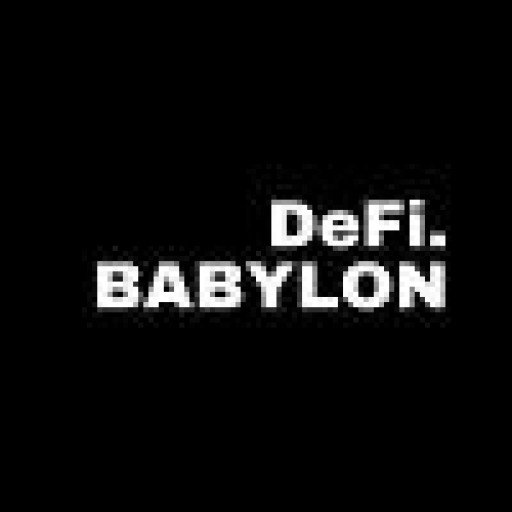[IMPACT] Please describe your proposed solution.
What is JUS?
JUS is a peer to peer, decentralized marketplace and mobile wallet allowing for users to facilitate secure crypto/fiat swaps and non-collateralized stablecoin lending. Built on top of Atala PRISM, JUS requires new users to verify and link their biometrics to a DID which they can then use to start fulfilling swap and onboarding requests in order to earn and build an on-chain history and credit score in a privacy-based manner.
Why now?
- According to the World Bank (2017), “globally, 1.7 billion adults remain unbanked, yet two-thirds of them own a mobile phone that could help them access financial services”. The growth of the mobile money market has been exponential with P2P transactions per hour rising from 68,000 in 2012 to 1.5 million in 2021, with Sub-Saharan Africa, Latin America and the Middle-East boasting increases in transaction value by 40%, 39%, and 49% respectively.
- According to Chainalysis, Africa is the world's third-fastest growing region for cryptocurrency.
- Cryptocurrency transactions make up 7% of the total retail transaction value, which is the most significant percentage across all regions studied.
- Stablecoins are being adopted quickly by middle-class Africans, both banked and unbanked, for remittance payments, DeFi, and protection from inflation.
How it works:
- To onboard and access swap features a user must complete tier 1 verification by scanning their facial biometrics, inputting their phone number and selecting their preferred mobile money service.
- An onboarding bounty request is broadcast over the JUS messaging service and accepted by a bounty hunter with the liquidity in stablecoin to cover the cost of minting a verified credential for this new user. Upon acceptance, the stablecoin gets deducted from the bounty hunter's wallet. Then their mobile number is disclosed to the new user, alongside a snapshot of their reputation on the JUS network.
- The stablecoin is locked in an escrowed smart contract until the new user transfers the equivalent in fiat using the preferred mobile money provider. In the case of any disputes, the contract terms will get verified by a community arbitrator. If the new user fails fulfill the contract, the funds are released back to the bounty hunter and the new users wallet is flagged.
- In the scenario where the bounty hunter confirms they have successfully received the fiat payment, the stablecoin is released to a VC minting smart contract that submits the biometric data of the new user to an external 3rd-party biometric authentication service. Upon successful verification, a verified credential is minted and transferred to the new users wallet giving them access to swapping features on the JUS wallet.When a user wants to swap, a swap bounty request is sent out over the JUS network to be accepted by a bounty hunter with sufficient liquidity. The stablecoin is locked in an escrowed smart contract until the fiat payment is received using the mobile money service priorly agreed.
Target Market
JUS v1 will target the $45 billion remittance market in Subsaharan Africa with the “Send” and “Swap” features. In Q4 2021, sub-Saharan Africa was the most expensive region to send remittances to, with an average cost of 7.8% on a 200 USD transaction. Globally, the average was 6%.
JUS v2 target the $360 billion gap in SME lending in Africa with the “Borrow” and “Lending pool” feature. According to the World Bank, Africa's credit gap exceeds $360bn, leaving over 20 million formal and informal SMEs without access to capital. Yet SMEs also comprise the overwhelming majority of Africa's economic fabric - around 90% in Cameroon, for example.
JUS DAO Token
21 Million Supply
15% Team Allocation
15% Marketing
70% Community Airdrop (10 Years)
JUS generates revenue for JUS DAO token holders in four ways:
- 0.5% fee on completed trades.
- 0.5 LQX per API request to query encrypted on-chain data.
- 0.5% fee on every loan granted.
- 0.5% fee from any rewards earned from staking Cardano natives assets via the JUS wallet.
These fees can be governed by JUS token holders.
[IMPACT] Please describe how your proposed solution will address the Challenge that you have submitted it in.
In countries with high inflation, many people, predominantly women are economically marginalised, undocumented, and unable to access their banking systems-–– let alone crypto markets, DeFi or stablecoins. There is a lack of infrastructure for converting crypto-assets into fiat currency. Crypto ATMs are not available in most African countries, and where they are available, they usually don’t offer stablecoins. If they are legally allowed to operate, centralized exchanges require a bank
account for converting stablecoins into fiat. Currently, peer-to-peer trading platforms like Paxful
and Localbitcoins, as well as informal trading groups on social messaging apps like
Whatsapp and Telegram, are methods of choice to circumvent these regulatory problems, but
they have drawbacks:
- longer trade times
- less intuitive user experience
- lower liquidity
- and lower trading volumes caused by comparatively smaller user bases and longer deal cycles.
JUS is a superior peer to peer platform and an impactful use case for the Cardano ecosystem because:
-
it's non-custodial.
-
users are biometrically verified to prevent duplicate wallets and fraud.
-
the reputation generated from a users on-chain activity can be offered to established CeFi incumbents to help expand their services to the untapped, unbanked market.
-
on-chain reputation enables credit markets to flourish- allowing merchants to take on more short term debt- resulting in them having higher liquidity to fulfill higher volume trades.
[IMPACT] What are the main risks that could prevent you from delivering the project successfully and please explain how you will mitigate each risk?
Lack of funding, marketing strategy execution, and delay of the Atala PRISM public release date.
[FEASIBILITY] Please provide a detailed plan, including timeline and key milestones for delivering your proposal.
MVP Development Plan ($500k)
-
Provide an order-book swap contract + JavaScript SDK (10 weeks~$100k)
-
Provide a peer-lending contract (with accompanying SDK functions as required) (10 weeks~$100k)
-
Provide a staking contract for the JUS token + Javascript SDK (10 weeks~$100k)
-
Preparation for audit (4 weeks~$40k)
-
Mobile/UI Front End Development (16 weeks~$160k)
-
No. of Devs : 6
[FEASIBILITY] Please provide a detailed budget breakdown.
MVP Development Plan ($500k)
-
Provide an order-book swap contract + JavaScript SDK (10 weeks~$100k)
-
Provide a peer-lending contract (with accompanying SDK functions as required) (10 weeks~$100k)
-
Provide a staking contract for the JUS token + Javascript SDK (10 weeks~$100k)
-
Preparation for audit (4 weeks~$40k)
-
Mobile/UI Front End Development (16 weeks~$160k)
-
No. of Devs : 6
[FEASIBILITY] Please provide details of the people who will work on the project.
Tashoma Vilini : Co-Founder/CEO, UI/UX Designer, Co-Founder @ Liqwid Finance
https://www.linkedin.com/in/tashoma/
Siddi Barrack : Co-Founder/CPO, Full Stack Dev @ World Mobile
https://www.linkedin.com/in/sid-barrack/
Issac Shapira : CTO, Platonic Systems
https://www.linkedin.com/in/isaacshapira/
Jamie Lee George, CCO, researcher, analyst and operations manager
[FEASIBILITY] If you are funded, will you return to Catalyst in a later round for further funding? Please explain why / why not.
<u>F9 Proposals: $350000 Requested</u>
- F9: Dapps, Products & Integrations Proposal : $250000 requested
- https://cardano.ideascale.com/c/idea/414100
- F9: JUS - More DIDs = More DAOs : $50000 requested
- https://cardano.ideascale.com/c/idea/414117/comments
- F9: JUS: Decentralized Onramp + Credit : $50000 requested
- https://cardano.ideascale.com/c/idea/414087
We will request the remaining $150,000 in future funding rounds.
[AUDITABILITY] Please describe what you will measure to track your project's progress, and how will you measure these?
Development Updates
Audits
Community Engagement
Active users
[AUDITABILITY] What does success for this project look like?
100k verified active users in year 1
1 million verified active users in year 2
[AUDITABILITY] Please provide information on whether this proposal is a continuation of a previously funded project in Catalyst or an entirely new one.
No.
Sustainable Development Goals (SDG) Rating
SDG goals:
Goal 1. End poverty in all its forms everywhere
Goal 8. Promote sustained, inclusive and sustainable economic growth, full and productive employment and decent work for all
Goal 10. Reduce inequality within and among countries
SDG subgoals:
1.1 By 2030, eradicate extreme poverty for all people everywhere, currently measured as people living on less than $1.25 a day
10.5 Improve the regulation and monitoring of global financial markets and institutions and strengthen the implementation of such regulations
10.6 Ensure enhanced representation and voice for developing countries in decision-making in global international economic and financial institutions in order to deliver more effective, credible, accountable and legitimate institutions
10.7 Facilitate orderly, safe, regular and responsible migration and mobility of people, including through the implementation of planned and well-managed migration policies
10.b Encourage official development assistance and financial flows, including foreign direct investment, to States where the need is greatest, in particular least developed countries, African countries, small island developing States and landlocked developing countries, in accordance with their national plans and programmes
8.10 Strengthen the capacity of domestic financial institutions to encourage and expand access to banking, insurance and financial services for all
Key Performance Indicator (KPI):
1.1.1 Proportion of the population living below the international poverty line by sex, age, employment status and geographic location (urban/rural)
8.10.2 Proportion of adults (15 years and older) with an account at a bank or other financial institution or with a mobile-money-service provider
#proposertoolsdg




